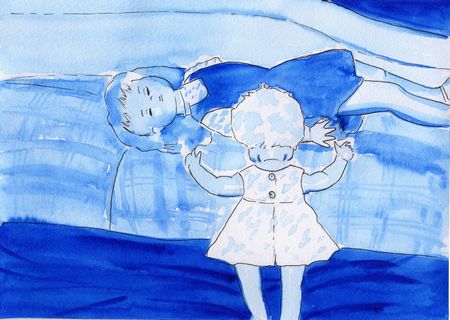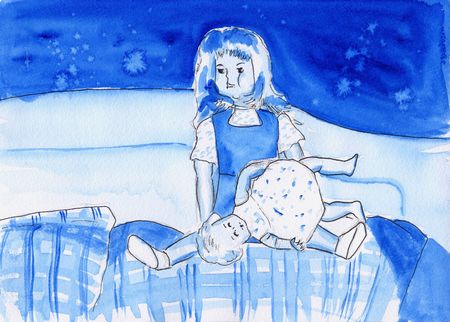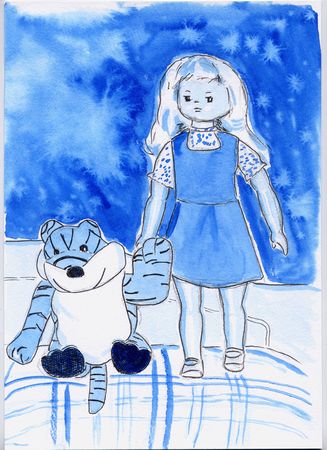As requested by Mithi, here is the full monoprint book. The page spreads appear differently in the book, as I have scanned the A4 sheets which I then folded back on themselves (to A5 size) to make the book pages. I bound the book using a Japanese stab-binding, which holds all the paper edges together. The centre folds then form the right-hand page edges.
The multi-coloured images use oil pastel to create an ‘ink pad’ which I then monoprinted from. The other images use oil paint rolled out thinly onto a perspex plate using a brayer. Each page in the book is protected with a sheet of tracing paper.
All the images were drawn using my non-dominant hand, and using an empty pen so that I couldn’t see the image properly until I finished it and turned the paper over to see the inked print.















